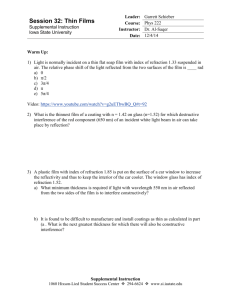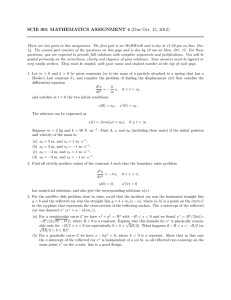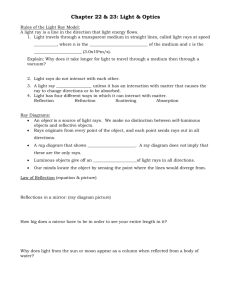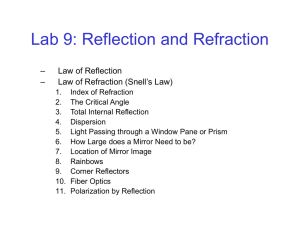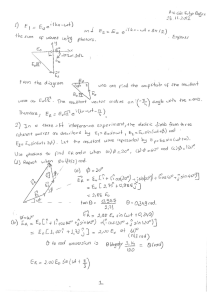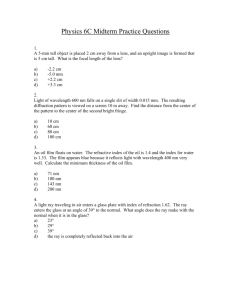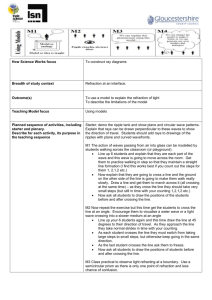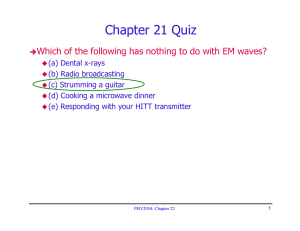Optics - Thin Films
advertisement
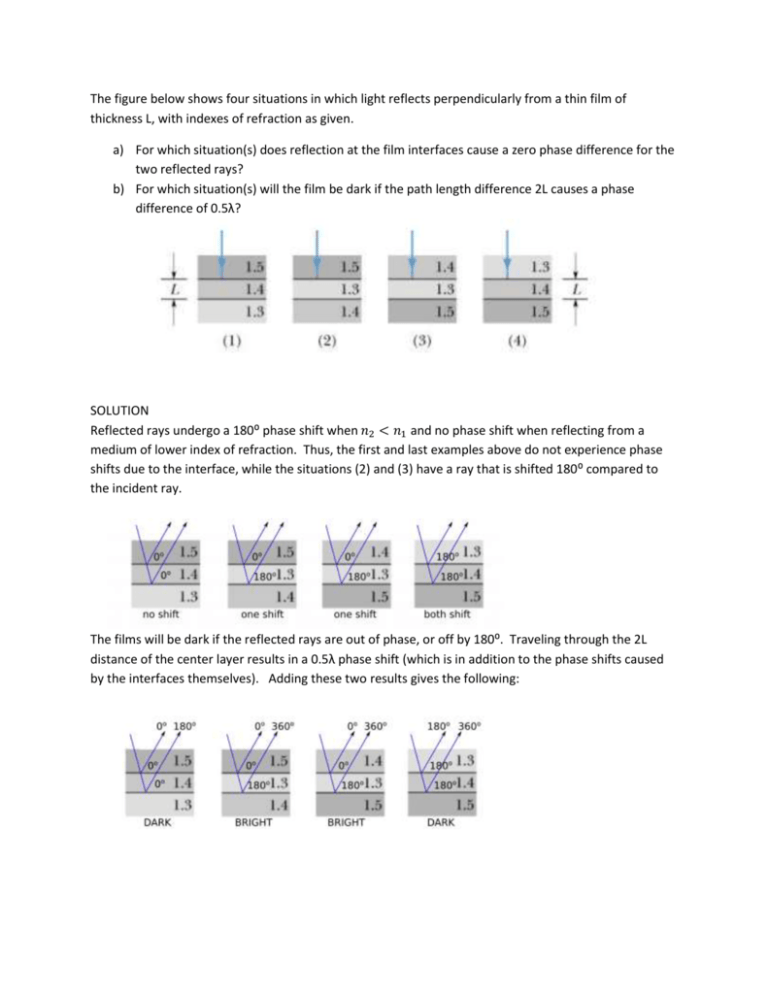
The figure below shows four situations in which light reflects perpendicularly from a thin film of thickness L, with indexes of refraction as given. a) For which situation(s) does reflection at the film interfaces cause a zero phase difference for the two reflected rays? b) For which situation(s) will the film be dark if the path length difference 2L causes a phase difference of 0.5λ? SOLUTION Reflected rays undergo a 180⁰ phase shift when 𝑛2 < 𝑛1 and no phase shift when reflecting from a medium of lower index of refraction. Thus, the first and last examples above do not experience phase shifts due to the interface, while the situations (2) and (3) have a ray that is shifted 180⁰ compared to the incident ray. The films will be dark if the reflected rays are out of phase, or off by 180⁰. Traveling through the 2L distance of the center layer results in a 0.5λ phase shift (which is in addition to the phase shifts caused by the interfaces themselves). Adding these two results gives the following:

